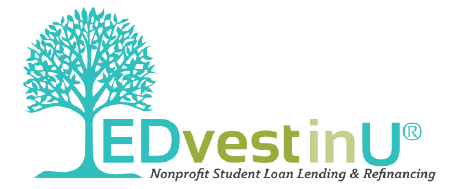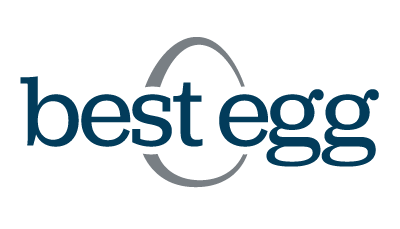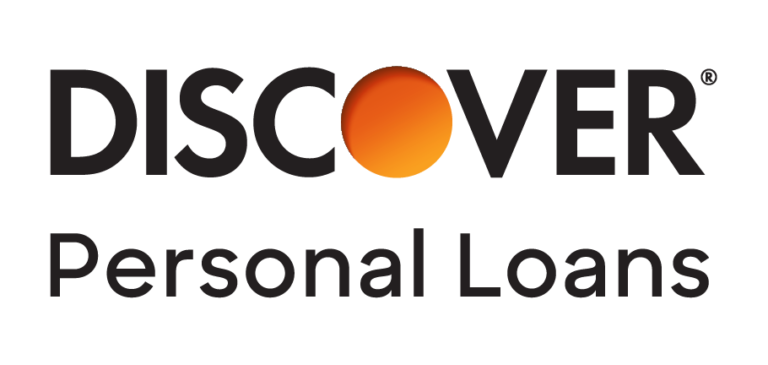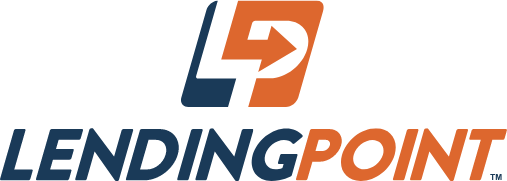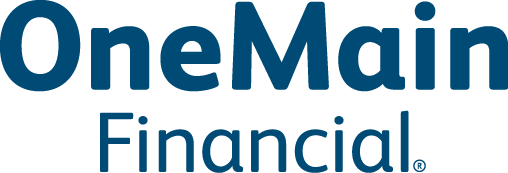Facing a large amount of credit card debt can feel overwhelming, especially since it might take a while to pay off. If you have $10,000 in credit card debt, it could take over a decade to repay if you make only minimum payments.
However, there are a few strategies that could make it easier to pay off $10,000 in credit card debt.
Here are four ways to pay off $10,000 in credit card debt:
Consolidate your debtWork with your credit card companyChoose a debt payoff strategyReevaluate your current spending
1. Consolidate your debt
Depending on your credit, consolidating your credit card debt might get you a lower interest rate — this could save you money on interest as well as potentially help you pay off your debt more quickly.
Here are a few options for consolidating credit card debt:
Take out a credit card consolidation loan
Best if: You have multiple high-interest credit cards to consolidate.
A credit card consolidation loan is a type of personal loan specifically used to consolidate credit card debt. If you have good to excellent credit, you might qualify for a lower interest rate than what you’re currently paying — this could save you hundreds or even thousands of dollars on interest charges.
Or you could opt to extend your repayment term to lower your monthly payments and lessen the strain on your budget. Just keep in mind that choosing a longer term means you’ll pay more in interest over time.
For example, here’s how much someone might save by consolidating their credit card debt with a personal loan:
Pros
Fixed rates: Personal loan rates are fixed, which means your payments will stay the same throughout the life of the loan. Additionally, personal loans usually have lower interest rates compared to credit cards.Could get a lower interest rate: If you have good credit, you might get a lower interest rate with a credit card consolidation loan.Fast loan process: Many personal loan lenders provide a quick and easy application process. If you’re approved, you’ll generally have your funds within a week — though some lenders will fund loans as soon as the same or next business day after approval.
Cons
Fewer options for poor or fair credit: You’ll typically need good to excellent credit to qualify for a personal loan — especially if you want to get a lower interest rate. There are also several lenders that offer personal loans for bad credit, but these loans usually come with higher interest rates compared to good credit loans.Might come with fees: Some lenders charge fees on personal loans, such as origination or late fees.No perks or rewards: Personal loans don’t offer the perks and rewards that sometimes come with credit cards.Tip: If you have bad credit and are struggling to get approved for a personal loan, consider applying with a creditworthy cosigner to improve your chances. Not all lenders allow cosigners on personal loans, but some do.
Even if you don’t need a cosigner to qualify, having one might get you a lower interest rate than you’d get on your own.
If you decide to take out a personal loan to consolidate credit card debt, be sure to consider as many lenders as possible to find the right loan for your needs.
Credible makes this easy — you can compare your prequalified rates from our partner lenders in the table below in two minutes.
LenderFixed ratesLoan amountsMin. credit scoreLoan terms (years)

Credible Rating>

Credible lender ratings are evaluated by our editorial team with the help of our loan operations team. The rating criteria for lenders encompass 78 data points spanning interest rates, loan terms, eligibility requirement transparency, repayment options, fees, discounts, customer service, cosigner options, and more. Read our full methodology.





View details>
9.95% – 35.99% APR$2,000 to $35,0005502, 3, 4, 5*Fixed APR:
9.95% – 35.99% APRVariable APR:
N/AMin. credit score:
550Loan amount:
$2,000 to $35,000**Loan terms (years):
2, 3, 4, 5*Time to fund:
As soon as the next business day (if approved by 4:30 p.m. CT on a weekday)Fees:
Origination feeDiscounts:
AutopayEligibility:
Available in all states except CO, IA, HI, VT, NV NY, WVCustomer service:
Phone, emailSoft credit check:
YesLoan servicer:
AvantLoan Uses:
Debt consolidation, emergency expense, life event, home improvement, and other purposesMin. Income:
$1,200 monthly

Credible Rating>

Credible lender ratings are evaluated by our editorial team with the help of our loan operations team. The rating criteria for lenders encompass 78 data points spanning interest rates, loan terms, eligibility requirement transparency, repayment options, fees, discounts, customer service, cosigner options, and more. Read our full methodology.





View details>
6.79% – 17.99% APR$5,000 to $35,0007401, 2, 3, 4, 5Fixed APR:
6.79% – 17.99% APRVariable APR:
N/AMin. credit score:
740Loan amount:
$5,000 to $35,000Loan terms (years):
1, 2, 3, 4, 5Time to fund:
Next business dayFees:
No prepayment penaltyDiscounts:
NoneEligibility:
Available in all 50 statesCustomer service:
PhoneSoft credit check:
YesMin. Income:
Does not discloseLoan Uses:
Debt consolidation, home improvement, self-employment, and other purposes
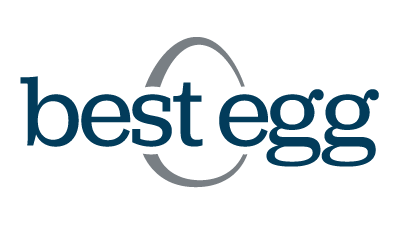
Credible Rating>

Credible lender ratings are evaluated by our editorial team with the help of our loan operations team. The rating criteria for lenders encompass 78 data points spanning interest rates, loan terms, eligibility requirement transparency, repayment options, fees, discounts, customer service, cosigner options, and more. Read our full methodology.





View details>
4.99% – 35.99% APR$2,000 to $50,0006003, 5Fixed APR:
4.99% – 35.99% APRVariable APR:
N/AMin. credit score:
600Loan amount:
$2,000 to $50,000Loan terms (years):
2, 3, 4, 5Time to fund:
As soon as 1 – 3 business days after successful verificationFees:
Origination feeDiscounts:
NoneEligibility:
Available in all states except DC, IA, VT, and WVCustomer service:
PhoneSoft credit check:
YesLoan servicer:
Best Egg and Blue Ridge BankMin. Income:
NoneLoan Uses:
Credit card refinancing, debt consolidation, home improvement, and other purposes
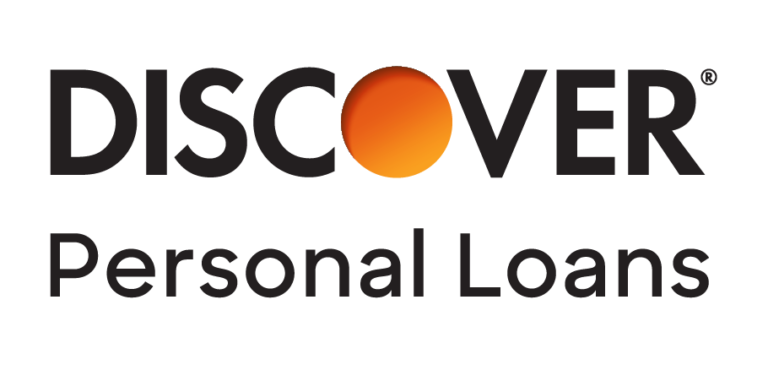
Credible Rating>

Credible lender ratings are evaluated by our editorial team with the help of our loan operations team. The rating criteria for lenders encompass 78 data points spanning interest rates, loan terms, eligibility requirement transparency, repayment options, fees, discounts, customer service, cosigner options, and more. Read our full methodology.





View details>
6.99% – 24.99% APR$2,500 to $35,0006603, 4, 5, 6, 7Fixed APR:
6.99% – 24.99% APRMin. credit score:
660Loan amount:
$2,500 to $35,000Loan terms (years):
3, 4, 5, 6, 7Time to fund:
As soon as the next business day after acceptanceFees:
Late feeDiscounts:
NoneEligibility:
Available in all 50 statesCustomer service:
PhoneSoft credit check:
YesLoan Uses:
Auto repair, credit card refinancing, debt consolidation, home remodel or repair, major purchase, medical expenses, taxes, vacation, and wedding

Credible Rating>

Credible lender ratings are evaluated by our editorial team with the help of our loan operations team. The rating criteria for lenders encompass 78 data points spanning interest rates, loan terms, eligibility requirement transparency, repayment options, fees, discounts, customer service, cosigner options, and more. Read our full methodology.





View details>
7.99% – 29.99% APR$10,000 to $35,000Not disclosed by lender2, 3, 4, 5Fixed APR:
7.99% – 29.99% APRMin. credit score:
Does not discloseLoan amount:
$10,000 to $50,000Loan terms (years):
2, 3, 4, 5Time to fund:
As soon as 2 business daysFees:
Origination feeDiscounts:
NoEligibility:
Available in all states except CO, CT, HI, KS, NH, NY, ND, OR, VT, WV, WI, and WYCustomer service:
PhoneSoft credit check:
YesMin. Income:
NoneLoan Uses:
Debt consolidation, home improvement, wedding, travel, medical expenses, and other purposes

Credible Rating>

Credible lender ratings are evaluated by our editorial team with the help of our loan operations team. The rating criteria for lenders encompass 78 data points spanning interest rates, loan terms, eligibility requirement transparency, repayment options, fees, discounts, customer service, cosigner options, and more. Read our full methodology.





View details>
7.04% – 35.89% APR$1,000 to $40,0006003, 5Fixed APR:
7.04% – 35.89% APRMin. credit score:
600Loan amount:
$1,000 to $40,000Loan terms (years):
3, 5Time to fund:
Usually takes about 2 daysFees:
Origination feeDiscounts:
NoneEligibility:
Available in all 50 statesCustomer service:
Phone, emailSoft credit check:
YesLoan servicer:
LendingClub BankMin. Income:
NoneLoan Uses:
Debt consolidation, paying off credit cards, home improvement, pool loans, vacations, and other purposes
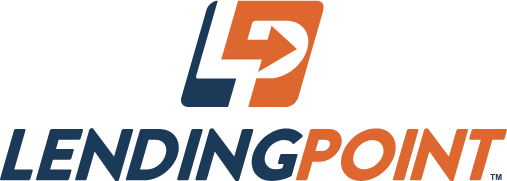
Credible Rating>

Credible lender ratings are evaluated by our editorial team with the help of our loan operations team. The rating criteria for lenders encompass 78 data points spanning interest rates, loan terms, eligibility requirement transparency, repayment options, fees, discounts, customer service, cosigner options, and more. Read our full methodology.





View details>
15.49% – 35.99% APR$2,000 to $36,5005802, 3, 4Fixed APR:
15.49% – 35.99% APRMin. credit score:
580Loan amount:
$2,000 to $36,500Loan terms (years):
2, 3, 4Time to fund:
As soon as the next business dayFees:
Origination feeDiscounts:
AutopayEligibility:
Available in all states except NV and WVCustomer service:
Phone, emailSoft credit check:
YesMin. Income:
$20,000Loan Uses:
Home improvement, consolidate debt, credit card refinancing, relocate, make a large purchase, and other purposes

Credible Rating>

Credible lender ratings are evaluated by our editorial team with the help of our loan operations team. The rating criteria for lenders encompass 78 data points spanning interest rates, loan terms, eligibility requirement transparency, repayment options, fees, discounts, customer service, cosigner options, and more. Read our full methodology.





View details>
2.49% – 19.99% APR$5,000 to $100,0006602, 3, 4, 5, 6, 7
(up to 12 years for home improvement loans)Fixed APR:
2.49% – 19.99% APRMin. credit score:
660Loan amount:
$5,000 to $100,000Loan terms (years):
2, 3, 4, 5, 6, 7*Time to fund:
As soon as the same business dayFees:
NoneDiscounts:
AutopayEligibility:
Available in all states except RI and VTCustomer service:
Phone, emailSoft credit check:
NoLoan servicer:
LightStreamMin. Income:
Does not discloseLoan Uses:
Credit card refinancing, debt consolidation, home improvement, and other purposes

Credible Rating>

Credible lender ratings are evaluated by our editorial team with the help of our loan operations team. The rating criteria for lenders encompass 78 data points spanning interest rates, loan terms, eligibility requirement transparency, repayment options, fees, discounts, customer service, cosigner options, and more. Read our full methodology.





View details>
6.99% – 19.99% APR1$3,500 to $40,0002660
(TransUnion FICO®️ Score 9)3, 4, 5, 6, 7Fixed APR:
6.99% – 19.99% APR1Min. credit score:
660
(TransUnion FICO®️ Score 9)Loan amount:
$3,500 to $40,0002Loan terms (years):
3, 4, 5, 6Time to fund:
Many Marcus customers receive funds in as little as three daysFees:
NoneDiscounts:
AutopayEligibility:
Available in all 50 statesCustomer service:
PhoneSoft credit check:
YesLoan servicer:
Goldman SachsMin. Income:
$30,000Loan Uses:
Credit card refinancing, debt consolidation, home improvement, major purchase, and other purposes

Credible Rating>

Credible lender ratings are evaluated by our editorial team with the help of our loan operations team. The rating criteria for lenders encompass 78 data points spanning interest rates, loan terms, eligibility requirement transparency, repayment options, fees, discounts, customer service, cosigner options, and more. Read our full methodology.





View details>
18.0% – 35.99% APR$1,500 to $20,000None2, 3, 4, 5Fixed APR:
18.0% – 35.99% APRMin. credit score:
NoneLoan amount:
$1,500 to $20,000Loan terms (years):
2, 3, 4, 5Time to fund:
As soon as the same day, but usually requires a visit to a branch officeFees:
Origination feeDiscounts:
NoneEligibility:
Must have photo I.D. issued by U.S. federal, state or local governmentCustomer service:
Phone, emailSoft credit check:
YesMin. Income:
Does not disclose

Credible Rating>

Credible lender ratings are evaluated by our editorial team with the help of our loan operations team. The rating criteria for lenders encompass 78 data points spanning interest rates, loan terms, eligibility requirement transparency, repayment options, fees, discounts, customer service, cosigner options, and more. Read our full methodology.





View details>
5.99% – 24.99% APR$5,000 to $40,0006002, 3, 4, 5Fixed APR:
5.99% – 24.99% APRMin. credit score:
600Loan amount:
$5,000 to $40,000Loan terms (years):
2, 3, 4, 5Time to fund:
As soon as 2 – 5 business days after verificationFees:
Origination feeDiscounts:
NoneEligibility:
Available in all states except MA, NV, and OHCustomer service:
Phone, email, chatSoft credit check:
YesMin. Income:
NoneLoan Uses:
Debt consolidation and credit card consolidation only

Credible Rating>

Credible lender ratings are evaluated by our editorial team with the help of our loan operations team. The rating criteria for lenders encompass 78 data points spanning interest rates, loan terms, eligibility requirement transparency, repayment options, fees, discounts, customer service, cosigner options, and more. Read our full methodology.





View details>
5.99% – 17.99% APR$600 to $50,000
(depending on loan term)6701, 2, 3, 4, 5Fixed APR:
5.99% – 17.99% APRMin. credit score:
670Loan amount:
$600 to $50,000*Loan terms (years):
1, 2, 3, 4, 5Time to fund:
2 to 4 business days after verificationFees:
NoneDiscounts:
NoneEligibility:
Does not discloseCustomer service:
Phone, emailSoft credit check:
NoMin. Income:
Does not discloseLoan Uses:
Debt consolidation, home improvement, transportation, medical, dental, life events

Credible Rating>

Credible lender ratings are evaluated by our editorial team with the help of our loan operations team. The rating criteria for lenders encompass 78 data points spanning interest rates, loan terms, eligibility requirement transparency, repayment options, fees, discounts, customer service, cosigner options, and more. Read our full methodology.





View details>
6.95% – 35.99% APR$2,000 to $40,0006403, 5Fixed APR:
6.95% – 35.99% APRMin. credit score:
640Loan amount:
$2,000 to $40,000Loan terms (years):
3, 5Time to fund:
As soon as one business dayFees:
Origination feeDiscounts:
NoneEligibility:
Available in all states except IA, ND, WVCustomer service:
Phone, emailSoft credit check:
YesMin. Income:
NoneLoan Uses:
Debt consolidation, home improvement, vehicles, small business, new baby expenses, and other purposes

Credible Rating>

Credible lender ratings are evaluated by our editorial team with the help of our loan operations team. The rating criteria for lenders encompass 78 data points spanning interest rates, loan terms, eligibility requirement transparency, repayment options, fees, discounts, customer service, cosigner options, and more. Read our full methodology.





View details>
5.99% – 18.83% APR$5,000 to $100,000Does not disclose2, 3, 4, 5, 6, 7Fixed APR:
5.99% – 18.83% APRMin. credit score:
Does not discloseLoan amount:
$5,000 to $100,000Loan terms (years):
2, 3, 4, 5, 6, 7Time to fund:
3 business daysFees:
NoneDiscounts:
AutopayEligibility:
Available in all states except MSCustomer service:
Phone, emailSoft credit check:
YesMin. Income:
Does not discloseLoan Uses:
Solely for personal, family, or household uses

Credible Rating>

Credible lender ratings are evaluated by our editorial team with the help of our loan operations team. The rating criteria for lenders encompass 78 data points spanning interest rates, loan terms, eligibility requirement transparency, repayment options, fees, discounts, customer service, cosigner options, and more. Read our full methodology.





View details>
8.93% – 35.93% APR7$1,000 to $20,0005603, 5Fixed APR:
8.93% – 35.93% APR7Min. credit score:
560Loan amount:
$1,000 to $50,000Loan terms:
3 to 5 years 8Time to fund:
Within one day, once approved9Loan types:
Debt consolidation, pay off credit cards, home improvements, unexpected expenses, home and auto repairs, weddings, and other major purchasesFees:
Origination feeDiscounts:
AutopayEligibility:
A U.S. citizen or permanent resident; not available in DC, SC, WVCustomer service:
Phone, emailSoft credit check:
Yes

Credible Rating>

Credible lender ratings are evaluated by our editorial team with the help of our loan operations team. The rating criteria for lenders encompass 78 data points spanning interest rates, loan terms, eligibility requirement transparency, repayment options, fees, discounts, customer service, cosigner options, and more. Read our full methodology.





View details>
5.94% – 35.97% APR$1,000 to $50,0005602, 3, 5, 6Fixed APR:
5.94% – 35.97% APRMin. credit score:
560Loan amount:
$1,000 to $50,000*Loan terms (years):
2, 3, 5, 6Time to fund:
Within a day of clearing necessary verificationsFees:
Origination feeDiscounts:
AutopayEligibility:
Available in all states except West VirginiaCustomer service:
EmailSoft credit check:
YesMin. Income:
Does not discloseLoan Uses:
Debt consolidation, credit card refinancing, home improvement, and other purposes

Credible Rating>

Credible lender ratings are evaluated by our editorial team with the help of our loan operations team. The rating criteria for lenders encompass 78 data points spanning interest rates, loan terms, eligibility requirement transparency, repayment options, fees, discounts, customer service, cosigner options, and more. Read our full methodology.





View details>
6.46% – 35.99% APR4$1,000 to $50,00055803 to 5 years4Fixed APR:
6.46% – 35.99% APR4Min. credit score:
580Loan amount:
$1,000 to $50,0005Loan terms (years):
3 to 5 years4Time to fund:
As fast as 1 business day6Fees:
Origination feeDiscounts:
NoneEligibility:
Available in all 50 statesCustomer service:
Phone, emailSoft credit check:
YesMin. Income:
$12,000Loan Uses:
Payoff credit cards, consolidate debt, take a course or bootcamp, relocate, make a large purchase, and other purposesCompare rates from these lenders without affecting your credit score. 100% free!
Compare Now
Trustpilot
All APRs reflect autopay and loyalty discounts where available | LightStream disclosure | Read more about Rates and Terms
Use a balance transfer card
Best if: You plan to pay off your balance quickly.
Another option for consolidating credit card debt is a balance transfer. This process lets you move your balance from one credit card to another.
Some balance transfer cards come with a 0% APR introductory offer, which means you could avoid paying interest if you can repay your debt before this period ends — usually within nine to 21 months, depending on the card.
However, if you can’t pay off your debt in time, you could stick with some hefty interest charges.
Pros
0% APR offer: Depending on the card you choose, you might be able to take advantage of a 0% APR introductory period and avoid paying interest for a certain period of time. This could be especially helpful if you plan to repay your balance quickly.Could help establish credit history: If you keep the balance transfer card open after paying off your initial debt, you can continue to use it to build your positive payment history and improve your credit.Might offer rewards or other perks: Some balance transfer cards provide various rewards or perks, such as cash back or travel points.
Cons
Might come with fees: In many cases, you’ll have to pay a balance transfer fee. This can range from 3% to 5% of the balance you want to transfer.Could come with high interest charges: If you don’t choose a card with a 0% APR introductory offer or can’t pay off your balance before this period ends, you could end up paying a large amount of interest.Might lead to further debt: Although a balance transfer card could help you manage your debt, it’s still another credit card — for some borrowers, it might be tempting to rack up a balance again.
Learn More: Refinancing Credit Card Debt and Getting Approved: Guide
Tap into your home’s equity
Best if: You own a home with at least 15% to 20% equity.
If you’re a homeowner, you might be able to tap into your home’s equity with a home equity loan or home equity line of credit (HELOC) and use the funds to consolidate your credit card debt.
With a home equity loan, you’ll get a lump sum that you can use how you wish.With a HELOC, you’ll have access to a revolving credit line that you can repeatedly draw on and pay off.
Because these loans are secured by your home, they often come with lower interest rates compared to credit cards or personal loans.
However, keep in mind that if you can’t keep up with your payments, you risk losing your house.
Pros
Lower interest rates: Because there’s less risk to the lender, home equity loans and HELOCs tend to have lower interest rates than credit cards or personal loans.Long repayment term: You could have five to 30 years to repay a home equity loan or up to 20 years to pay off a HELOC.Can use funds for any purpose: You can use the funds from a home equity loan or HELOC for almost any purpose. This could be helpful if you have other expenses to cover in addition to your credit card debt.
Cons
Risk of foreclosure: If you can’t make your payments on a home equity loan or HELOC, the lender could seize your home.Closing costs: Home equity loans and HELOCs can come with similar closing costs as a traditional mortgage — often 2% to 5%.Longer process: Depending on the complexity of the loan, it could take a few weeks for your loan to be processed and funded.
Check Out: Home Equity Loan vs. Personal Loan: Which Is Right for You?
2. Work with your credit card company
In some cases, you might be able to work out an arrangement with your credit card company that could help you tackle your debt. Here are a few options to consider:
sk your credit card company about a hardship plan
Best if: Your account is in good standing.
If your credit card payments are becoming too difficult to manage, it’s a good idea to call your card company to see if any assistance is available to you.
For example, several credit card companies offer hardship plans, which often provide a lower interest rate, reduced monthly payments, and lower fees.
Generally, credit card companies prefer to work with long-time customers who haven’t missed any payments. If you think you might not be able to make a payment, be sure to reach out to your card issuer as soon as possible.
Pros
Could lower your interest rate: A hardship plan could temporarily provide more optimal terms, such as a lower interest rate.Fixed repayment: Hardship plans usually come with fixed repayment schedules, which could make it easier to budget for your payments.Maintain good standing: If you reach out to your credit card company before you miss any payments, you’ll have a better chance of keeping your account in good standing with the company.
Cons
Might hurt your credit: Your card issuer might suspend or close your account for the duration of the hardship plan, which could lead to a decrease in your credit score.Could make it hard to access more credit: If your card issuer reports your hardship plan to the credit bureaus, you might have a harder time qualifying for other loans and credit in the future.Can’t combine multiple cards: If you have debt on multiple credit cards and want to sign up for a hardship plan, you’ll need to contact each card issuer individually.
Learn More: Coronavirus Hardship Loans: 7 Options to Consider
Try to negotiate a debt settlement
Best if: You have a sum of cash that you can use to negotiate a settlement for less than what you owe.
Debt settlement is an arrangement where your credit card company agrees to accept a lump sum or number of payments for less than what you owe in order to settle the account.
You can approach your creditor to discuss settlement on your own, or you could involve one of the several for-profit companies that offer debt settlement services.
Keep in mind: For-profit debt settlement companies often ask you to stop making payments on your accounts while they negotiate with your creditors, which could severely damage your credit.
Pros
Might be able to pay off your debt for less than what you owe: If your card issuer accepts the debt settlement plan, you could pay off your debt for less than what you actually owe.Can be done on your own: While there are several companies that could help you pursue debt settlement, you also have the option to work with your card issuer on your own.Could help you avoid bankruptcy: If you don’t want to file for bankruptcy, debt settlement might be a helpful option.
Cons
Could damage your credit: Your credit report will reflect that you settled an account for less than what you owed, which could hurt your credit. Your credit could also be damaged if you work with a for-profit company and agree to stop making payments.Potential fees: Debt settlement companies usually charge a fee for their services ranging from 20% to 25% of your final settlement amount.Might not work: There’s no guarantee that your card issuer will accept the settlement offer.
Check Out: How to Get Out of Credit Card Debt
Consider a debt management plan
Best if: You want professional guidance on the best way to repay your debt.
If you’re not sure how to tackle your debt, signing up for a debt management plan might be a good idea. With this option, a nonprofit debt counseling agency — such as the National Foundation for Credit Counseling — will help you come to an agreement with your creditors.
Debt management plans typically last for three to five years until your debt is paid off. During this time, you’ll make your payments to the agency, which will send the agreed-upon amounts to your creditors.
Pros
Professional help to manage your debt: Credit counselors offer a variety of resources and educational tools to help you take control of your debt and create good credit habits.Might come with lower interest rate and fees: Your creditors might agree to lower your interest rates and reduce or waive fees if you sign up for a debt management plan.Could improve your credit score: Making on-time payments under a debt management plan could help you build a positive payment history and improve your credit score over time.
Cons
Might close your credit cards: Any credit cards included in a debt management plan will likely have to be closed, meaning you’ll have less access to credit. Additionally, you might not be permitted to apply for new credit for the duration of the plan.Could come with fees: Depending on the agency you choose, you might have to pay upfront and monthly fees.Will have to pay off your debt in full: Unlike with a debt settlement, you’ll have to pay off your full balance on a debt management plan.Tip: Under a debt management plan, you’ll make just one monthly payment — similar to debt consolidation. However, you won’t necessarily be able to get a lower interest rate.
If you have good credit and can qualify for a lower interest rate on a personal loan, consolidating your debt might be a better option if you’re looking to save money on your debt.
Just remember to consider how much a personal loan will cost you before you borrow so you can be prepared for any added expenses.
You can estimate how much you’ll pay for a loan using our personal loan calculator below.
Enter your loan information to calculate how much you could pay
Loan amountEnter the total amount borrowedInterest rateEnter your annual interest rateorLoan termEnter the amount of time you have to repay your loanyears
Total Payment>
Total Interest>
Monthly Payment>
With a>
loan, you will pay>
monthly and a total of>
in interest over the life of your loan. You will pay a total of>
over the life of the
loan.
Need a personal loan?
Compare rates without affecting your credit score. 100% free!
Check Personalized Rates
Checking rates won’t affect your credit score.
3. Choose a debt payoff strategy
If you have multiple cards to pay off, choosing a debt payoff strategy could be helpful. Here are a couple of methods to consider:
Use the debt avalanche method
Best if: You’re motivated by long-term interest savings.
With the debt avalanche method, you’ll focus on paying off your debt with the highest interest rate first.
Here’s how it works:
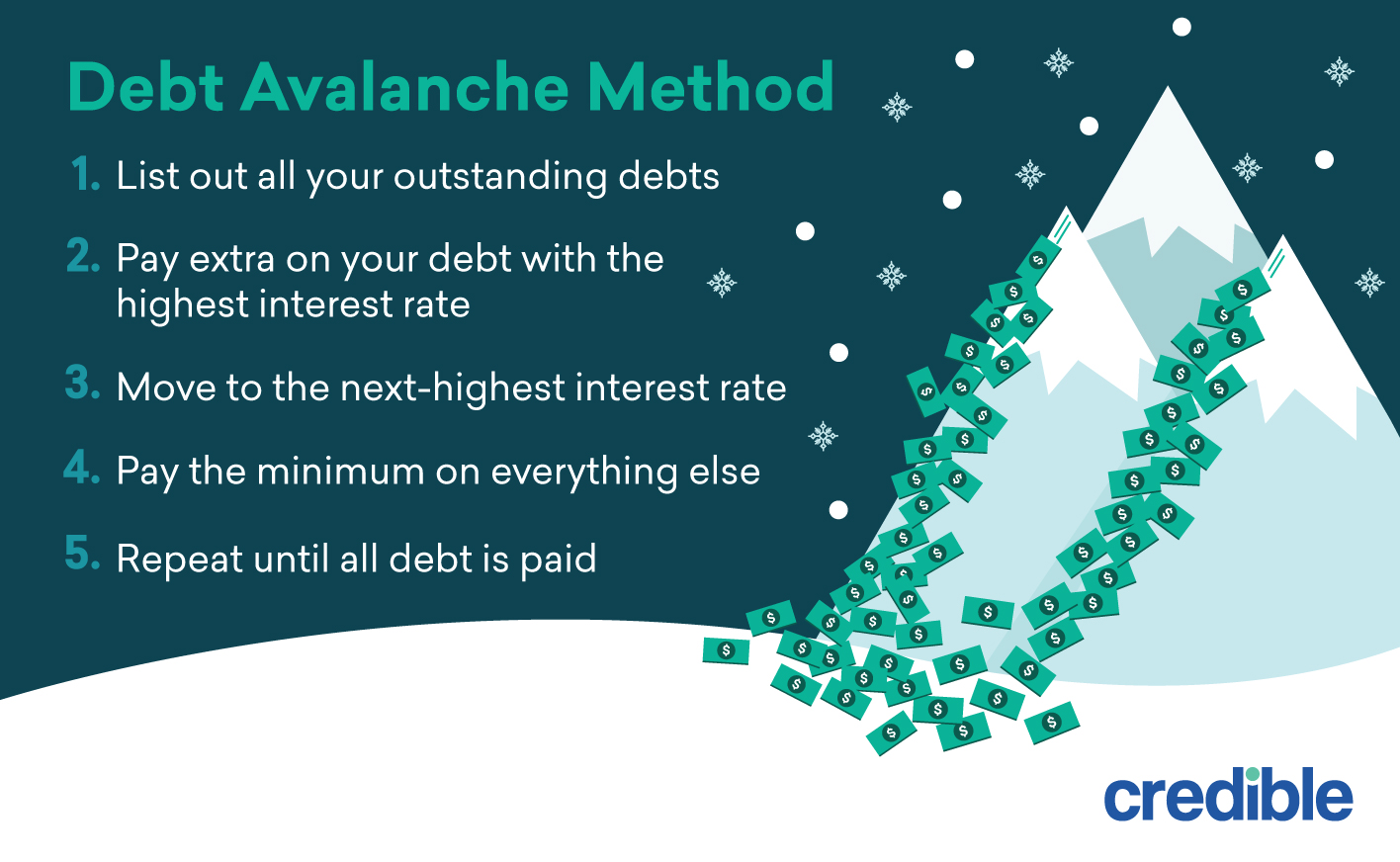
Pros
Could save money on interest: Paying down your highest-interest debt first could help you reduce your overall interest charges.Might get out of debt faster: Saving money on interest might help you pay off your debt ahead of schedule.
Cons
Could take longer to see results: While paying down your highest-interest debt might help you save money on interest, it could take a while to see any significant results.Might be hard to sustain motivation: If you need to enjoy small wins to maintain motivation, you might have a hard time sticking to the debt avalanche method.
Learn More: How to Consolidate Bills Into One Payment
Use the debt snowball method
Best if: You’re motivated by small wins.
If you choose the debt snowball method, you’ll concentrate on repaying your smallest debt first. Here’s how it works:
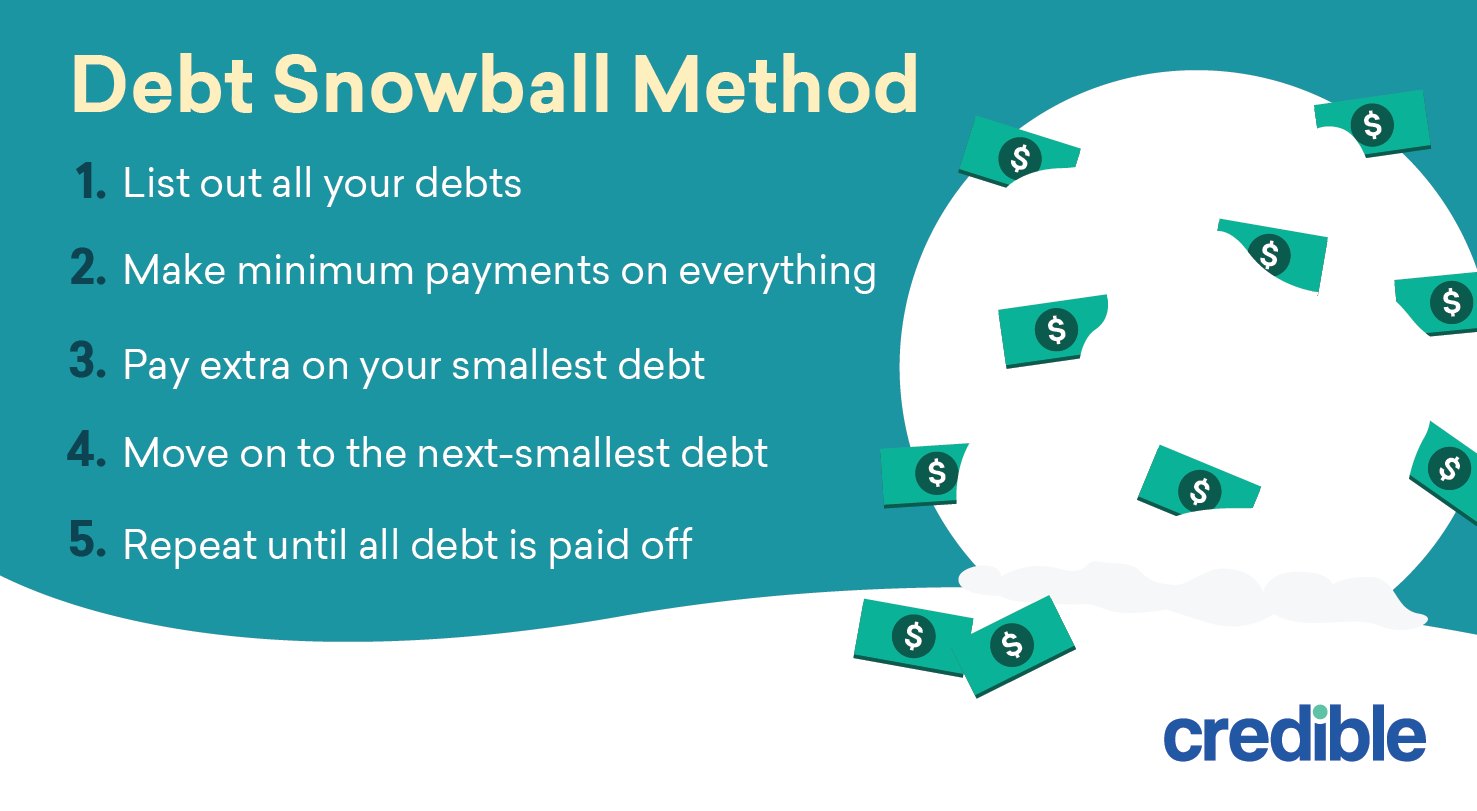
Pros
Faster results: You’ll likely see quicker results with the debt snowball method compared to the debt avalanche.Could help maintain motivation: Because you’ll be paying off balances sooner with the debt snowball, it could be easier to stay motivated.
Cons
Won’t save as much on interest: The debt snowball method generally doesn’t offer the same amount of interest savings as the debt avalanche.Could take longer: Because you won’t be saving much money on interest, it will likely take longer to fully repay your debt using the debt snowball method.
Check Out: Are Interest-Free Loans Really Interest-Free?
4. Reevaluate your current spending
Establishing a financial plan that prioritizes paying off debt could also help you tackle a $10,000 credit card balance. Here are a few strategies that could help:
Create (or update) your budget
Creating a budget is a good way to keep track of your income as well as your expenses. It can also help you plan for your financial goals — such as paying off your credit card debt.
To set up a budget focused on debt payoff:
Calculate your monthly income.Calculate your monthly expenses.Subtract your expenses from your income — this amount is what you can afford to put toward your debt.
Cut out the non-essentials
As you list out your monthly expenses, consider what you might be able to cut. For example, maybe you could unsubscribe from a streaming service you hardly use. Or you might start cooking at home to save money on dining out.
Tip: By reducing your spending, you’ll have more room in your budget to focus on paying off your credit card debt.
Sell your stuff
Many of us have unused items lying around the house that could be sold for extra cash. For example, you might consider selling electronics, furniture, or books.
Tip: If you don’t have anything to sell, you could consider purchasing items for cheap on a marketplace, upcycling them, and reselling for a profit.
Find a side hustle
After reviewing your budget, you might find that you don’t have much extra cash to put toward debt. In this case, you might think about starting a side hustle to earn more money.
For example, you could:
Drive for a ridesharing business, such as Uber or LyftDeliver food through DoorDash or UberEatsOffer freelance services, such as writing or consultingTutor local students
Frequently asked questions
Here are the answers to a few commonly asked questions about paying off credit card debt:
What is the monthly payment on a $10,000 loan?
The monthly payment on a $10,000 loan will depend on:
Interest rate: You’ll generally need good to excellent credit to qualify for the lowest available interest rates. The higher your interest rate, the more you’ll pay monthly as well as over the life of the loan.Repayment term: Personal loans typically come with a term ranging from one to seven years, depending on the lender. Choosing a longer term will likely get you a lower monthly payment — but it also means you’ll pay more in interest over time. It’s usually a good idea to choose the shortest term you can afford to keep your interest costs as low as possible.For example: Say you take out a $10,000 debt consolidation loan with a 10% interest rate and a five-year term. With these terms, you’d end up paying $323 a month with a total repayment cost of $11,616.
If you qualified for a 7% interest rate and chose a three-year term instead, you’d have a monthly payment of $309 and a total repayment cost of $11,115.
Is it smart to pay off one credit card with another?
You typically can’t use a credit card to make payments on another card. However, you can move your balance from one card to another with a balance transfer.
If you can qualify for a balance transfer card with a 0% APR introductory offer and can repay your balance before this period ends, then it could be a good way to save money on interest. But if you wouldn’t be able to pay off the card in time, you might be better off keeping your balances where they are.
How much credit card debt is OK to have?
Whether or not you have too much credit card debt depends on a couple of factors:
Monthly income: Having monthly debt payments that take up a large portion of your income can make debt unmanageable and saving for other goals impossible. It’s generally advised that monthly debt payments in total take up no more than 36% of your monthly income.Credit utilization: One of the major components of your credit score is your credit utilization ratio — the amount you owe on revolving credit lines (like credit cards) compared to your total credit limits. Using a high percentage of your available credit could have a negative impact on your credit. It’s typically a good idea to keep your credit utilization ratio under 30%.
If you decide to take out a personal loan to consolidate your credit card debt, remember to consider as many lenders as you can to find the right loan for you.
This is easy with Credible: You can compare your prequalified rates from multiple lenders in two minutes — without affecting your credit.
Ready to find your personal loan?
Credible makes it easy to find the right loan for you.
Free to use, no hidden feesOne simple form, easy to fill out and your info is protectedMore options, pick the loan option that best fits your personal needsHere for you. Our team is here to help you reach your financial goalsFind My Rate
Checking rates won’t affect your credit
Trustpilot
The post How to Pay Off $10,000 in Credit Card Debt appeared first on Credible.















